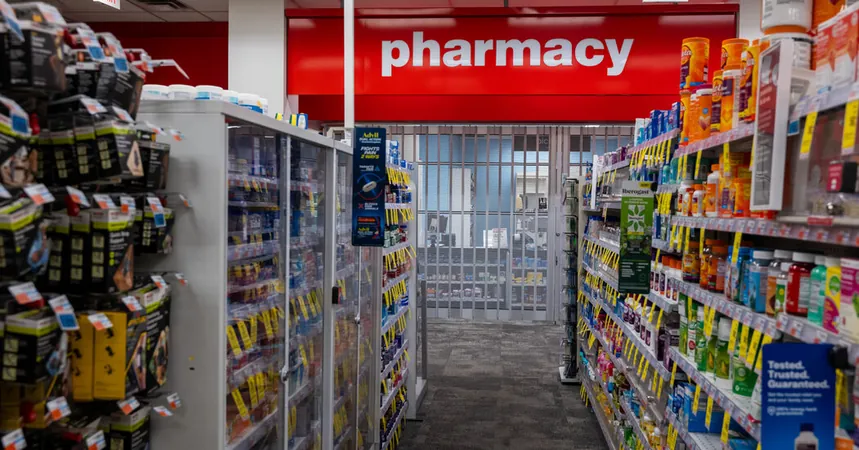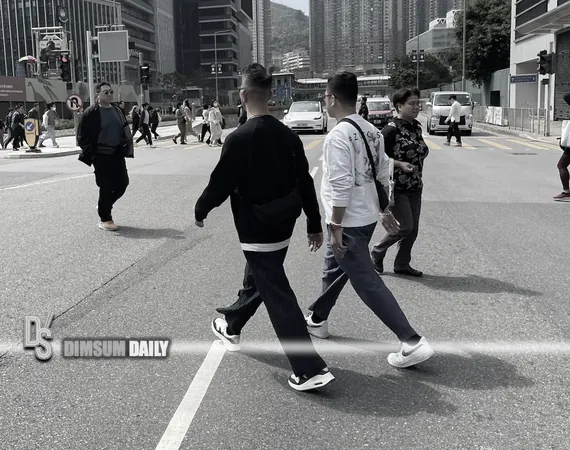
Could Trump's New Tariffs on Pharmaceuticals Spark a Drug Supply Crisis?
2025-04-04
Author: Lok
Introduction
In a surprising turn of events on Wednesday, the pharmaceutical industry breathed a sigh of relief as President Donald Trump temporarily exempted foreign-made medicines from his ambitious new tariff scheme. However, the vice grip of uncertainty remains, as Trump has repeatedly hinted at imposing specific tariffs targeting pharmaceuticals, with potential rates soaring as high as 25%. Industry insiders are bracing for an official announcement that could come sooner rather than later.
Trump's Statement and Industry Impact
During a recent Rose Garden event, President Trump declared, “The pharmaceutical companies are going to come roaring back, they’re all coming back to our country because if they don’t, they got a big tax to pay.” This highlights his ongoing commitment to revitalizing U.S. drug manufacturing, which has seen substantial decline over the last decade.
Current Manufacturing Landscape
Currently, while some pharmaceutical manufacturing still takes place within the United States, a staggering majority of the medications consumed by Americans rely on overseas production. Major players in this global supply chain include China, India, and Europe, with these countries producing vital components for drugs that Americans rely on daily. For instance, China and India are responsible for nearly all of the world's active ingredients in well-known medications like ibuprofen and ciprofloxacin, according to Clarivate, industry data experts.
Potential Consequences of Tariffs
As manufacturers increasingly relocate overseas for cost efficiency, the question arises: Could Trump's tariffs inadvertently lead to higher drug prices and potential shortages? Experts warn that imposing tariffs may not motivate companies to shift production back to the U.S. but could end up inflating prices or decreasing the availability of generic medications—essentially the backbone of prescription drugs in the U.S.
Navigating Trade-offs
The Trump administration is navigating a tightrope, weighing the potential ramifications of increased drug costs against the goal of bolstering domestic production. Deliberations are ongoing regarding the imposition of tariffs under Section 232, a national security-related legal authority that the administration has applied to other sectors like lumber and automobiles. However, the timing remains within a shroud of uncertainty, leaving drugmakers anxious about the future.
Calls for Gradual Implementation
The pharmaceutical industry has been lobbying for a gradual rollout of tariffs rather than a hefty initial levy. Industry representatives are urging for exemptions on critical drugs and those at risk of shortage, emphasizing the significant implications these tariffs could have.
Global Drug Production Dynamics
So where are U.S. medications being manufactured? The truth is, drug production often spans multiple countries, with different stages occurring across the globe. From raw materials sourced in Asia to formulation and packaging in the West, drugs undergo complex international journeys. Most of the inexpensive generics now come from India or China, amidst fears that this reliance on foreign manufacturing poses a national security risk—a concern echoed by both Trump and President Biden’s officials.
Shift in Manufacturing to Overseas Sites
In recent years, the shift of U.S. pharmaceutical manufacturing to overseas sites has been pronounced. The peak of domestic medication production is believed to have occurred in 2006, coinciding with a wave of patent expirations on major drugs. Consequently, Indian and Chinese companies seized the moment, ramping up production of off-patent generics while U.S. incentives faded.
Risks of Drug Shortages
As the potential for tariffs looms large, the prospect of drug shortages emerges as a riskier reality. For certain generic medications with slim profit margins, tariffs could trigger a mass exit from the market, particularly for injection-based drugs, which are harder to produce and less lucrative.
Impact Beyond Pharmaceuticals
The pharmaceutical sector isn’t the only arena that could be affected. Industry analysts warn of cascading shortages, potentially disrupting the availability of medical devices, which many hospitals rely on for critical procedures.
Conclusion: Uncertain Future
Data from 2024 outlines America’s top prescribed drugs—none of which are exempt from these looming tariffs. With healthcare spending of Americans at stake, the pressure is mounting not just for pharmaceutical giants, but for everyone in the industry.
President Trump aims to lure pharmaceutical companies back to U.S. soil, but whether his tactics will materialize into tangible outcomes is still debatable. While some big players like Eli Lilly and Johnson & Johnson are making investments to bolster U.S. manufacturing infrastructure, many generic drug firms may not possess the financial resilience to survive the cost implications.
Should these tariffs come into effect, the reality of drug shortages or increased prices could soon make their presence felt at pharmacy counters nationwide. As patients begin to feel the pinch, the looming question remains: Will these tariffs genuinely fortify U.S. production or ultimately undermine patient access to vital medications?
As consumers and healthcare providers traverse this uncertain landscape, the stakes couldn't be higher. The answers may shape the future of American healthcare and the very accessibility of essential medications.



 Brasil (PT)
Brasil (PT)
 Canada (EN)
Canada (EN)
 Chile (ES)
Chile (ES)
 Česko (CS)
Česko (CS)
 대한민국 (KO)
대한민국 (KO)
 España (ES)
España (ES)
 France (FR)
France (FR)
 Hong Kong (EN)
Hong Kong (EN)
 Italia (IT)
Italia (IT)
 日本 (JA)
日本 (JA)
 Magyarország (HU)
Magyarország (HU)
 Norge (NO)
Norge (NO)
 Polska (PL)
Polska (PL)
 Schweiz (DE)
Schweiz (DE)
 Singapore (EN)
Singapore (EN)
 Sverige (SV)
Sverige (SV)
 Suomi (FI)
Suomi (FI)
 Türkiye (TR)
Türkiye (TR)
 الإمارات العربية المتحدة (AR)
الإمارات العربية المتحدة (AR)